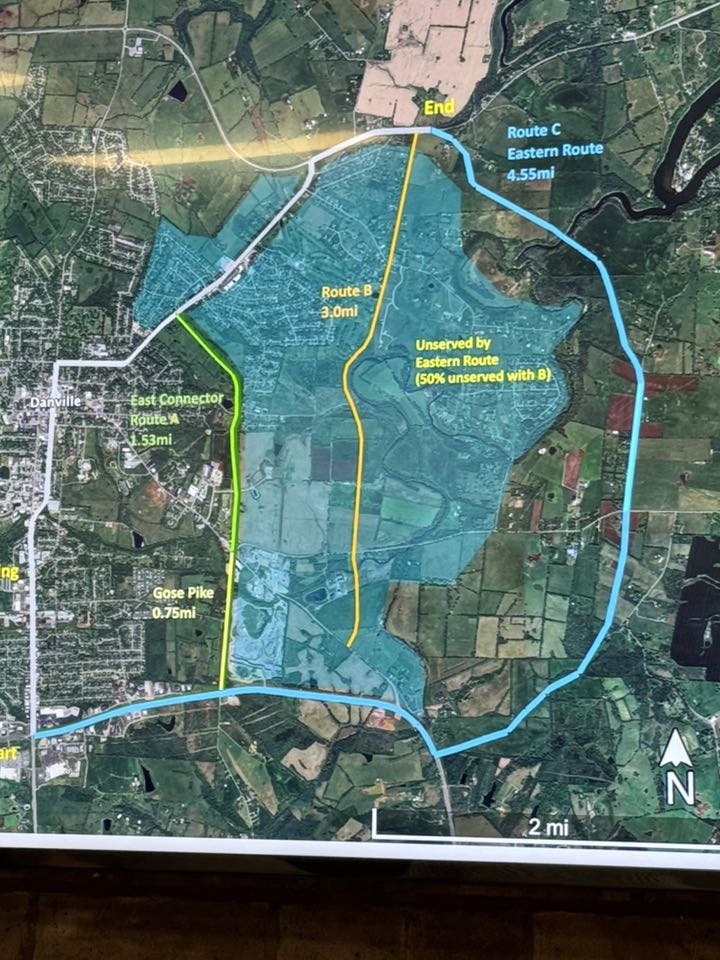Rotary report, Dec. 6
Published 8:14 am Monday, December 11, 2017
Danville’s city attorney highlights sign regulation in Rotary presentation
By DAVE FAIRCHILD
Danville Rotary
Trending
Stephen Dexter, reviewed his role as Danville’s City Attorney, before focusing on a current
Issue that is unresolved and sometimes prompts a heated conversation within the community. The highly controversial topic is “Sign Regulation”.
He began by the topic by reviewing a United States Supreme Court ruling in 2013 that local governments are still struggling with how to comply in sign regulation and enforcement. The origin of the problem was an ordinance passed by an Arizona city. The city of Gilbert, Arizona, enacted a “robust” ordinance dealing with sign regulation. Their ordinance was not particularly different from what exists in Danville lots of other municipalities across the country. Gilbert’s ordinance categorized signs that related to the allowable size and where they could and could not be located. For example, business/commercial and non-ideologist signs could be twenty square feet in size and could be located in any zoning district in the city.
Political signs were required to be no more than thirty two square feet if located on non-residential property or sixteen square feet if located on residential property. It further required that political signs not be placed more than sixty days before the primary election and had to be removed within 15 days after the general election.
Temporary directional signs were allowed for events sponsored by non-profit organizations, but could not be larger the six square feet and were restricted to not more than twelve hours prior the event and not more than six hours after the event. A problem arose involving a church that did not have their own building. They met in various school buildings depending on availability. Their members would place 15-20 signs throughout the city to advertise their services and provide directions. Most of the signs were posted on Saturday and most were removed by mid-day Sunday.
The problem arose because of the restriction on sign placement more than twelve hours before the actual event, i.e., a sign regarding a service that began at noon on Sunday could not be placed before midnight on Saturday. Even a 10 a.m. service could not be placed before most people were in their homes the preceding night.
Trending
The church leaders were careful to make their members aware of the sign placement requirements, but not all the members adhered to the restrictions. The code enforcement staff for the city of Gilbert, AZ, ultimately issued citations for the church for repeatedly breaking this signage policy.
The church filed for an injunction in U.S. District Court, which was denied. Subsequently the case was appealed to the 9th District Court of Appeals, which ruled in favor of the city. That decision was appealed to the United States Supreme Court, which accepted the case.
The majority opinion, written by Clarence Thomas, determined that it was a freedom of speech issue, which fell under the 1st Amendment of the Constitution. Thomas ruled that it was content based, because the ordinance differentiated among ideological signs, commercial signs and temporary directional signs.
Because of the content based regulation, he held that it had to meet the strict scrutiny test that the Court had established, which required a narrowly tailored law that met a compelling state interest. Thomas stated that it might be in the best interest of the community to require that signs have an esthetically pleasing appearance, but the regulation was not narrowly tailored to achieve that end. Therefore it was ruled, “Unconstitutional”.
Dexter stated that the implication for Danville was, “if you have the read the sign to determine what category the sign is, it violated the constitution.” He said the most recent sign regulations in Danville, which were amended in 2013 after an eighteen month grueling review, would probably be thrown out if challenged. “Why, because if you have to read it, it cannot be regulated.”
The bottom line, regarding sign regulation, is that municipalities can only regulate sign size and placement. Danville’s Planning Commission is busy re-writing the city’s signage regulations and is hoping to complete the revised policies in 2018. The regulations will then have to be approved by the Fiscal Court, the City of Danville, and Junction City.
In response to questions, Dexter addressed the 911 funding issue and Kroger’s property tax appeal.






